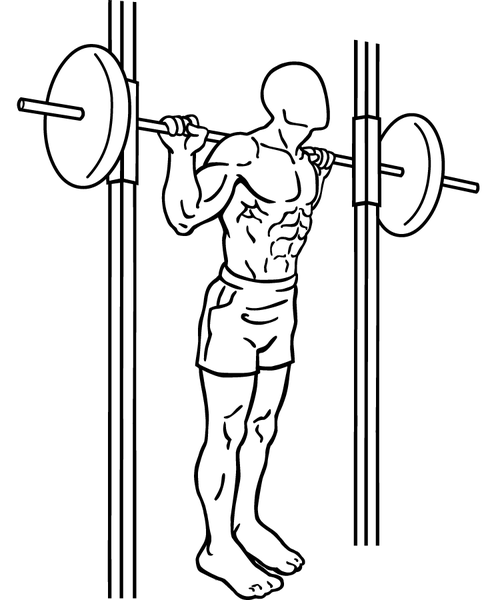- You are here:
- Home »
- Blog »
- Training »
- How to do Smith Machine Squats
How to do Smith Machine Squats

Photo By: Wikimedia
Be it personal preference or access to equipment, you may want to sometimes perform your front or back squats with the use of a Smith machine. The video and explanation below will show you how to do Smith machine squats with proper technique.
Smith machine squats might not be a perfect alternative to traditional back squats, but they can have many of the same benefits. Using a Smith machine makes the exercise significantly less taxing on your core and other stabilizing muscles. This allows you to potentially load up much more weight on the bar. There are also safety benefits to the machine, particularly if you don’t have a spotter.
The video below demonstrates proper technique for the Smith machine back squat. It is important to make sure you have the bar at the proper height level before starting. You’ll also want to make sure the safety stoppers are in place and secure.
Once you are in position and have unlocked the weight, the form used is just like a traditional barbell squat. Using good posture, you lower yourself until your quadriceps are below parallel to the ground. Then you quickly stand up using your leg muscles. Foot placement is very important for this exercise. You don’t want your feet too far in front or behind you. This can cause problems for your knees and also reduce the emphasis on your quads and hamstrings.
Sets and reps for this exercise can be similar to normal squats. Many will choose to do higher volume than normal as a way to stimulate hypertrophy. If you are doing these for muscle growth try 3 to 4 sets of 8 or more reps. For strength training, try more sets with fewer reps.
While the benefits of the Smith machine is questioned by many, it can certainly be a part of a well-rounded program. According to a 2009 study published in the Journal of Strength and Conditioning Research, muscles were worked similarly in both traditional and machine squats. Free weight squats did have benefits for strengthening plantar flexors, knee flexors, and knee extensors. While most coaches wouldn’t recommended only squatting with a machine, there is no problem with using it occasionally for variety.
The issues with Smith machine squats bring up the old “free weights vs. machines” argument. Traditional squats are one of the best exercises for developing a strong core because you have to be able to stabilize a heavy barbell. Using a machine takes away this benefit. Basically, the machine stabilizes the resistance for you and only your legs need to do the work.
While this might not be the most “functional” way to train, isolating a muscle group doesn’t have to be a bad thing. If you want to specifically target the quadriceps, hamstrings, and glutes, this is a great way to do so. It is important that the rest of your body maintains good posture, but the legs are doing most of the heavy lifting.
Many beginner lifters may also find it easier to use a Smith machine for certain exercises. The safety of the machine allows them to feel more confident when performing the lift. This allows them to work a more complete range of motion, since they don’t have to worry about balance. The safety stops can also ease the minds of individuals who don’t have a spotter or training partner.
Even though they have a fixed plane of motion, Smith machines can be quite versatile. Experienced athletes will be able to take advantage by performing plyometric exercises. Performing jump squats on a machine, for example, can have tremendous benefits and may be easier than using a barbell. Safety is crucial when using the machine in this way, though.
It’s important to not fall in love with the machine and put too much emphasis on it. Nothing will top barbell front and back squats when it comes to developing size and strength in the lower body. It’s fine to use the machines occasionally, but don’t make it a year-round crutch.
Variety is a key component to any strength training program. Learning how to do Smith machine squats properly can provide both mental and physical variety when used in the right way.

